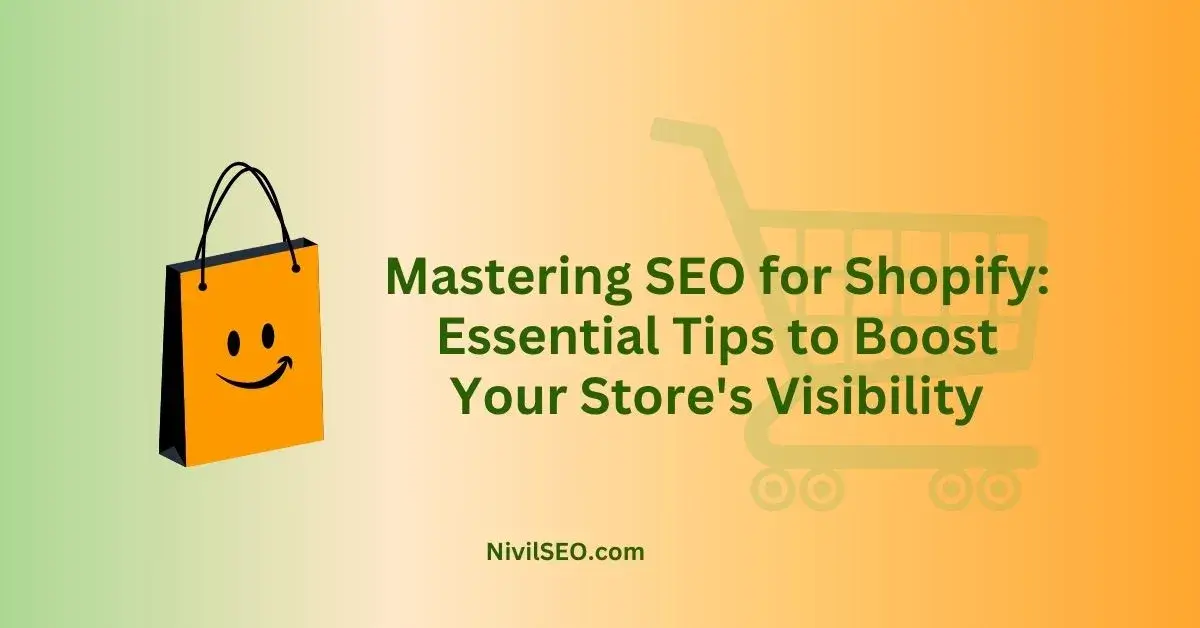Thus, having an online store as an extension of the physical store is even more essential in today’s world. Thanks to its navigation and the developed and relevant functions, Shopify is one of the favorite platforms among e-stores. However, the creation of the store alone is not sufficient; the project has to reach out to the target clients. SEO (Search Engine Optimization) is the process by which the website is optimized to attain high rankings on the search engine. Here in this best-selling guide, you will learn the various ways through which you can maximize your Shopify site to rank higher in the search engines so as to attract more traffic to your store. For insights on how to do SEO for a Shopify website, this guide will provide practical tips and strategies to help you achieve better visibility and results.
What is Shopify?
Shopify is one of the best rated platforms for managing an online store because it is easy to use and offers numerous features. It has an array of templates for customization; it is endowed with safe payment procedures, and tools for products, orders, and store analysis.
What is Shopify SEO?
Shopify SEO is the specific set of actions that are directly intended to help a Shopify store rank higher in search engine results pages. This entails enhancing all the factors of optimization on website pages and other off-page factors in a bid to enhance visibility, attract traffic, and thus sales. For businesses seeking expert assistance, consulting an SEO expert Dubai can provide specialized strategies and insights tailored to local and global markets.
Does Shopify have Good SEO?
Since Free Shopify stores are created with Search Engine Optimization in mind, this website has characteristics such as customizable title tags, meta descriptions, custom sitemaps, etc. However, similar to any platform, it has its conns. Appropriate usage of these features and the consideration made to universal SEO difficulties can greatly enhance your store’s search engine results.
What are the Biggest SEO Issues with Shopify?
Despite its strengths, Shopify does have some SEO challenges, including:Despite its strengths, Shopify does have some SEO challenges, including:
- Limited customization for URLs and meta tags: One of the weaknesses of Shopify under SEO is that it widely employs subfolders instead of subdomains, so its URL structure is fairly rigid.
- Duplicate content: This is caused by parameters in the URLs; the same content can have different versions.
- Limited control over site speed: Shopify offers a rather fast storefront experience on average while you may need to fine-tune your store even more.
What is the Best SEO App for Shopify?
Several SEO apps can enhance your Shopify store’s SEO, but some of the most popular and effective ones include:
- Yoast SEO: Known for its comprehensive SEO features and user-friendly interface.
- SEO Manager: Offers tools for optimizing meta tags, keywords, and sitemaps.
- Plug in SEO: Provides insights and suggestions to improve your store’s SEO.
Yoast SEO for Shopify: Your Shopify SEO Expert
We all know what Yoast SEO is, it is a plugin for WordPress, but what about shopify one? It is of great use for improving meta tags, creating Google and XML sitemaps, and checking the content for SEO compliance. It is not as seamlessly connected as it is to WordPress now but still has relevant apps for those on Shopify.
SEO Basics for Shopify
Start with Keyword Research for Your Store
Keyword research is the foundation of any SEO strategy. Identify relevant keywords that potential customers are searching for and incorporate them into your product titles, descriptions, and content.
Write Unique and High-Quality Product Descriptions
Avoid using manufacturer descriptions or duplicate content. Write unique, engaging, and informative descriptions that provide value to your customers and include your target keywords.
Properly Working with Images on Your Store to Improve Shopify SEO
Optimize your images by using descriptive file names and alt text. This helps search engines understand what the images are about and can improve your store’s visibility in image search results.
Make Products Findable with an XML Sitemap
An XML sitemap helps search engines crawl and index your store’s pages more efficiently. Shopify automatically generates a sitemap for your store, but ensure it’s submitted to Google Search Console.
Fix Your Site Structure with Internal Linking and Proper Navigation
Create SEO-Friendly URLs in Shopify
Customizing your URL structure can improve your store’s SEO. Use descriptive and keyword-rich URLs for your products and pages, avoiding unnecessary parameters and numbers.
Technical SEO for Shopify
Optimize Your Shopify Store for Speed
Page speed is a critical ranking factor. Optimize your store’s performance by compressing images, minimizing code, and using a fast and reliable hosting service.
Prevent Duplicate Content in Your Shopify Store
Duplicate content can harm your SEO efforts. Use canonical tags to indicate the preferred version of a page and avoid using duplicate content across multiple pages.
Add Your Shopify Store to Google Search Console
Google Search Console helps you monitor your store’s performance in search results, identify issues, and submit your sitemap. Regularly check for errors and improvements to maintain good SEO health.
Conclusion
Applying SEO tips advices on your Shopify store will increase its ranking, drives more traffic to your store and increases your sales. Having discussed the typical SEO problems and knowing how to deal with them, it is possible to guarantee that the store will be popular in the search engine results and is accessible to the target audience.










